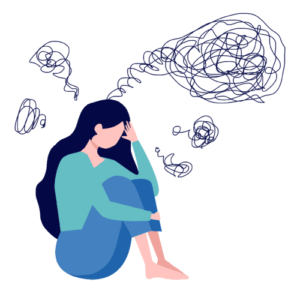
Which LGBTQ Tv Trope Are You?
Answer these simple questions to understand more about Which LGBTQ Tv Trope Are You?. We share instant results and keep your information confidential.

What is LGBTQ Tv Trope Test?
LGBT TV trope assessment is a critical analysis of how lesbian, gay, bisexual, and transgender characters and themes are portrayed in television shows. It involves examining common stereotypes, tropes, and representations within the media, such as the “bury your gays” trope, where LGBTQ+ characters often meet tragic ends. This assessment aims to evaluate the impact of these portrayals on LGBTQ+ communities, promoting awareness of harmful stereotypes while celebrating positive and authentic representations. It encourages TV producers and writers to create more diverse, inclusive, and respectful portrayals of LGBTQ+ individuals to foster understanding and acceptance in society.
Who can benefit from this LGBTQ Tv Trope Test?
The LGBT TV Trope Test can benefit a wide range of stakeholders in the entertainment industry and society as a whole. First and foremost, it serves as a valuable tool for creators and writers, helping them to critically evaluate and avoid harmful stereotypes or clichés when representing LGBT characters and storylines. Production companies and networks can use it to ensure responsible and authentic storytelling, appealing to a diverse audience while avoiding potential backlash. Advocacy groups and activists can utilize the assessment to hold the industry accountable for fair and positive representation. Ultimately, the assessment benefits viewers by fostering more inclusive and accurate portrayals of LGBT individuals, promoting empathy, understanding, and societal progress.


LGBTQ Tv Trope Test Accuracy
Assessing the accuracy of LGBT TV tropes requires a nuanced approach. While television has made strides in representing diverse sexual orientations and gender identities, some tropes still persist. Accuracy varies: some shows provide authentic, well-rounded LGBT characters, while others rely on clichés like the “tragic gay” or “token queer” stereotypes. It’s essential to recognize progress but remain critical of harmful portrayals. Accuracy hinges on whether these portrayals reflect the real experiences of LGBT individuals and challenge stereotypes rather than perpetuating them. Overall, while improvements have been made, the accuracy of LGBT TV tropes remains a mixed bag, emphasizing the importance of continued vigilance and advocacy for better representation.
Types of LGBTQ Tv Trope Test
Bury Your Gays:
This trope involves killing off LGBT characters disproportionately compared to their heterosexual counterparts. Historically, it has been overused in television and can send the message that LGBT lives are less valuable.
Coming Out Story:
This trope often focuses on the process of a character coming out to themselves and others. It can be powerful in highlighting the struggles and triumphs of the coming out experience.
Queerbaiting:
Queerbaiting is the practice of hinting at or teasing a same-sex romantic relationship between characters without ever following through. It can be seen as exploitative and disingenuous.
Token LGBT Character:
Having a single LGBT character as a token gesture can be problematic as it may feel like a superficial attempt at diversity without exploring the experiences of the community.
Tragic Backstory:
Some LGBT characters are given tragic backstories related to their sexual orientation or gender identity, which can reinforce stereotypes and perpetuate negativity.
Positive Representation:
Positive representation involves showing LGBT characters living fulfilling lives, having healthy relationships, and facing challenges unrelated to their sexuality or gender identity.
Handling LGBTQ Tv Trope Issues
Handling LGBT TV trope issues is an important aspect of responsible storytelling and media representation. Many traditional TV tropes related to LGBT characters and relationships have been criticized for perpetuating harmful stereotypes and reinforcing biases. Here are some steps and guidelines for handling LGBT TV trope issues effectively:
- Diverse Representation: Ensure that LGBT characters are diverse in terms of race, gender identity, sexual orientation, age, and other factors. Avoid tokenism and provide authentic portrayals of the community.
- Avoid Stereotypes: Steer clear of harmful stereotypes such as the “bury your gays” trope (where LGBT characters are disproportionately killed off), the “predatory lesbian” trope, or the “gay best friend” stereotype. Challenge these tropes by subverting or deconstructing them.
- Consult with the Community: Engage with members of the LGBT community to understand their perspectives and experiences. Hire LGBT writers, consultants, and actors to provide insight and authenticity to the characters and storylines.
- Humanize Characters: Develop well-rounded, complex LGBT characters with their own aspirations, flaws, and character arcs. Avoid reducing them to just their sexual orientation or gender identity.
- Avoid Sensationalism: Don’t exploit LGBT stories for shock value or sensationalism. Be sensitive when dealing with topics like coming out, discrimination, or hate crimes.
- Tell Diverse Stories: Go beyond coming out narratives. LGBT characters should be involved in a variety of storylines that reflect their experiences, including romance, friendships, career challenges, and more.
- Show Healthy Relationships: Portray healthy, loving relationships within the LGBT community. This helps counteract harmful stereotypes about unstable or dysfunctional relationships.
- Educate the Audience: Use your platform to educate the audience about LGBT issues and the challenges faced by the community. Raise awareness about discrimination, bullying, and the importance of acceptance.
- Give Agency to LGBT Characters: Let LGBT characters take control of their own stories. Avoid making them passive victims or plot devices for straight or cisgender characters’ development.
- Continual Learning: Be open to feedback and criticism. Understand that evolving societal norms and attitudes may require you to reevaluate how you handle LGBT representation in your content.
Incorporating these principles into your TV show can lead to more inclusive and responsible representation of LGBT characters and storylines. It’s essential to be sensitive, respectful, and open to evolving your approach as societal understanding and acceptance of LGBT issues continue to evolve.